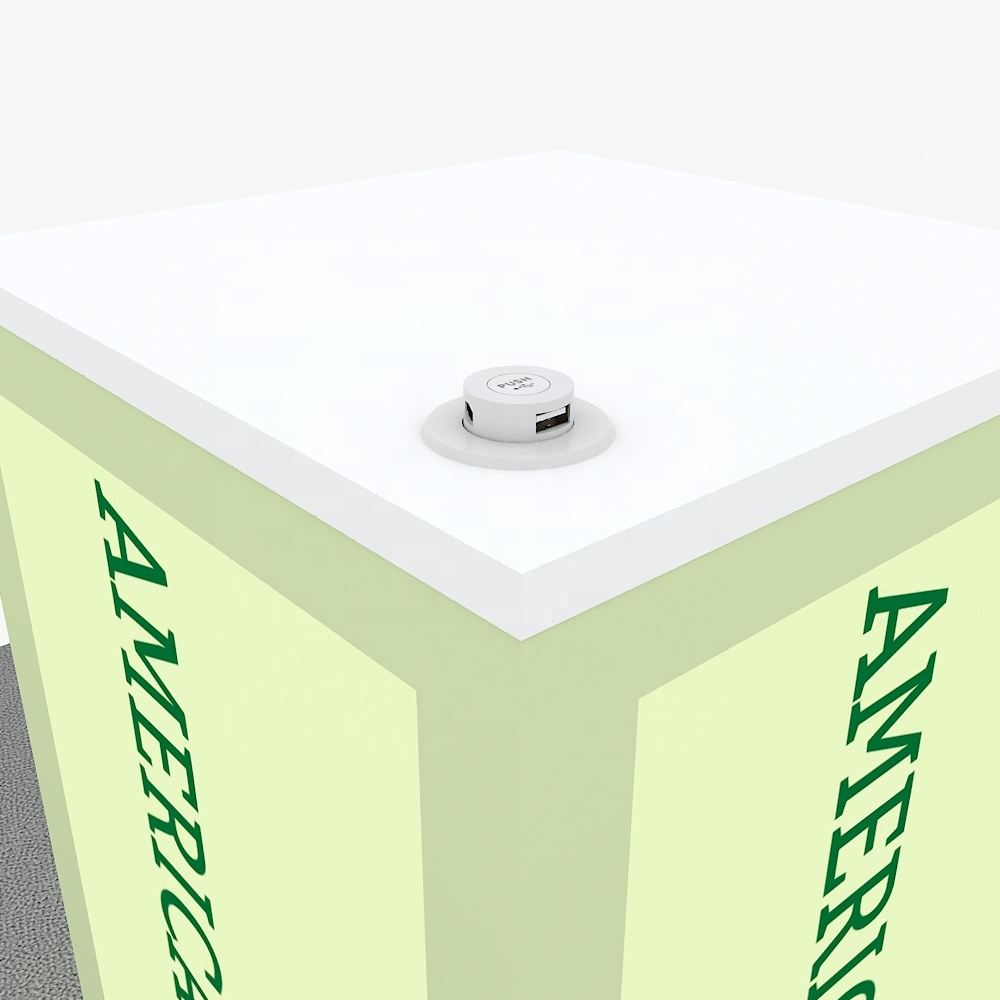The creation of a mockup is a crucial step in the journey towards an outstanding exhibition booth. It is the blueprint that brings together all the design elements and concepts, allowing for a detailed visualization and refinement before the actual construction.
To begin with, accurate measurements and scale are of utmost importance. The mockup should be a precise representation of the actual booth space, ensuring that all elements fit together seamlessly. This requires careful consideration of the dimensions of the exhibition hall, as well as any restrictions or regulations regarding booth size and placement. For example, if there are height limitations, the mockup must reflect this to avoid any last-minute design adjustments.
The selection of materials for the mockup is also significant. While it may not be necessary to use the exact same materials as the final booth, they should be representative enough to convey the intended look and feel. Cardboard, foam boards, and 3D printing materials are commonly used for creating mockups. These materials are relatively inexpensive and easy to work with, allowing for quick iterations and modifications. For instance, a foam board can be easily cut and shaped to create the structure of a display unit, while 3D printing can be used to produce detailed prototypes of custom-designed elements.
Attention to detail is what sets apart a great mockup from an average one. This includes everything from the placement of signage and graphics to the finishing touches of the furniture and fixtures. The graphics on the mockup should be high-quality and accurately represent the brand’s visual identity. The typography, colors, and images should be consistent with the overall branding guidelines. Even the smallest details, such as the texture of a surface or the style of a handle, can have a significant impact on the overall impression of the booth.
Functionality testing is an essential part of the mockup process. This involves simulating the visitor experience within the mockup. Are the aisles wide enough for comfortable movement? Can the interactive elements be easily accessed and operated? Testing the functionality of the booth design in the mockup stage can help identify and resolve any potential issues before the actual construction begins. For example, if a touch-screen display is difficult to reach or operate in the mockup, adjustments can be made to its position or height.
Collaboration and feedback are also vital. The mockup should be presented to various stakeholders, including the marketing team, sales representatives, and even potential customers if possible. Their feedback can provide valuable insights and perspectives that may have been overlooked. This collaborative approach ensures that the final booth design meets the needs and expectations of all parties involved.
En conclusión, mastering the art of creating an exhibition booth mockup is the key to achieving a flawless and impactful final booth. It allows for careful planning, precise execution, and continuous improvement, ultimately leading to a successful exhibition presence and a memorable brand experience.

